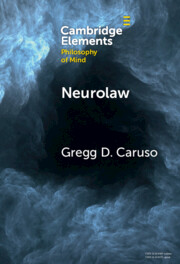Element contents
Neurolaw
Published online by Cambridge University Press: 27 February 2024
Summary
- Type
- Element
- Information
- Series: Elements in Philosophy of MindOnline ISBN: 9781009271172Publisher: Cambridge University PressPrint publication: 21 March 2024
References
- 2
- Cited by



